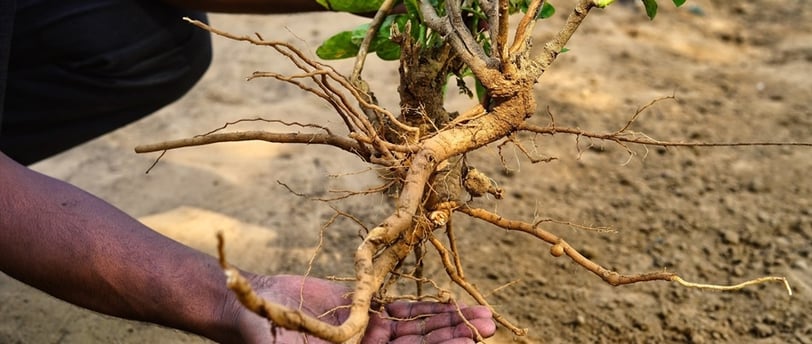How Culinary Shamans Purvey Ashwagandha's Benefits
Ashwagandha, also known as Withania somnifera or Indian ginseng, is an adaptogenic herb used for centuries in Ayurvedic medicine. It’s known for reducing stress, anxiety, and improving sleep, with potential benefits for energy, immunity, and reproductive health. Research suggests it lowers cortisol levels, aiding stress management, and may enhance athletic performance and fertility, though more studies are needed for some claims.
4/25/20255 min read


Introduction to Ashwagandha
Ashwagandha, scientifically known as Withania somnifera, is an evergreen shrub native to parts of India, Africa, and the Middle East, with a storied place in Ayurvedic medicine. Its name, derived from Sanskrit where “ashwa” means horse and “gandha” means smell, reflects the strong, horse-like odor of its root.
This herb has been utilized for over 6,000 years, as documented in the Charak Samhita, one of Ayurveda’s foundational texts, highlighting its role as a Rasayana, a rejuvenating herb aimed at promoting youthful physical and mental health.
Medicinal Virtues And Current Research
Ashwagandha is renowned for its adaptogenic properties, helping the body resist physical and mental stress. Research, such as that found on Healthline’s 9 Proven Health Benefits, suggests it reduces cortisol levels, the body’s primary stress hormone, making it effective for anxiety and stress management. It also shows promise in improving sleep quality, with studies indicating sedative effects beneficial for insomnia (PMC: Current Research on Ashwagandha).
Additionally, it may boost energy and stamina, support immune function, and aid reproductive health, particularly in increasing testosterone levels and improving fertility, though evidence for some claims, like its anti-cancer potential, remains preliminary and requires further human studies (Memorial Sloan Kettering Cancer Center: Ashwagandha).
The herb contains bioactive compounds like withanolides, associated with anti-inflammatory and antioxidant effects, which may help manage chronic conditions like arthritis (NCCIH: Ashwagandha Usefulness and Safety).
However, controversy exists, as scientific evidence is insufficient for some traditional uses, with mixed results in clinical trials, especially for conditions like COVID-19, where it lacks sufficient high-quality support (WebMD: Ashwagandha Overview).
Historical Context and Evolution of Use
Ashwagandha’s history is deeply rooted in Ayurveda, where it’s been used for centuries as a tonic for various ailments. The PMC: An Overview on Ashwagandha notes its use as a nervine tonic, particularly for stress-related conditions, with traditional applications including emaciation in children, debility in the elderly, and conditions like rheumatism and insomnia.
Different parts of the plant have specific uses: the root is a tonic and aphrodisiac, leaves treat fever, flowers are astringent, and seeds are anthelmintic, used for eye health (Wikipedia: Withania somnifera).
Its evolution into modern use has been driven by scientific validation, with recent studies exploring its neuroprotective, anti-inflammatory, and cardioprotective properties (PMC: Current Research on Ashwagandha). This has led to its incorporation into supplements, teas, and now culinary applications, reflecting its adaptability to contemporary health needs.
Importance for Culinary Shamans
For culinary shamans, Ashwagandha is a vital ingredient, bridging the gap between food and medicine. As noted in Dr. Axe: Ashwagandha Benefits, it supports multiple body systems, including immune, neurological, and endocrine, making it ideal for creating meals that nourish both body and spirit.
Its adaptogenic nature is particularly valuable for managing stress in today’s fast-paced world, and its versatility allows incorporation into various dishes, enhancing their therapeutic value. Having Ashwagandha in the pantry enables culinary shamans to transform ordinary meals into healing experiences, supporting emotional and spiritual well-being.
Culinary Applications and Ideas
Ashwagandha’s earthy, slightly bitter flavor can be masked or complemented, making it suitable for a range of culinary creations. It’s commonly used in drinks like lattes and teas, as seen in 9 Ashwagandha Recipes, where it’s paired with nut milks and sweeteners to create calming beverages.
Sweets like laddus and energy balls, detailed in 21 Ways To Take Ashwagandha, incorporate Ashwagandha for stamina and vitality. It can also be added to breakfasts like oatmeal or chia pudding, and even baked goods like cookies, as shown in Banyan Botanicals: 4 Ashwagandha Recipes, offering a modern twist.
While less common, savory dishes like soups or stews can include Ashwagandha, leveraging its anti-inflammatory properties, though traditional uses lean more toward sweets and drinks. The key is pairing it with ingredients like cinnamon, cardamom, or honey to balance its taste, making it accessible for culinary experimentation.
Therapeutically Designed Recipes
Below are three recipes, each addressing specific health concerns, with at least one cooked, showcasing Ashwagandha’s therapeutic potential. These recipes are drawn from various sources, ensuring they align with traditional and modern uses.
Ashwagandha Latte (For Stress Reduction and Improved Sleep)
Ingredients: 1 cup of milk (almond, hazelnut, or a mix of coconut milk and water), 1 teaspoon ashwagandha powder, ½ teaspoon cinnamon powder, ½ teaspoon maple syrup or honey.
Instructions: Warm the milk in a medium saucepan over low heat. Add ashwagandha powder, cinnamon, and sweetener. Whisk until well combined. Pour into your favorite mug and enjoy about an hour before bedtime.
Therapeutic Benefits: This latte combines ashwagandha’s calming effects with cinnamon’s warmth, creating a perfect nightcap to promote deeper, more restful sleep. The addition of tart cherry juice (optional) can further enhance its sleep-inducing properties due to its natural melatonin content, as noted in 9 Ashwagandha Recipes.
Ashwagandha Laddus (For Stamina and General Health)
Ingredients: 1 tsp safed musli, 1 tsp kali musli, 1 tsp nutmeg, 1 tsp cardamom, 2 tsp cinnamon, 1 tsp ashwagandha, 3 tsp tragacanth gum, 6 tsp coconut flakes, 8 cups ghee, 2 cups jaggery, 1/2 cup wheat flour.
Instructions: Mix and grind all ingredients except wheat flour, ghee, and coconut. Mix wheat flour thoroughly in ghee. Heat jaggery with a little ghee and mix with the flour mixture. Add coconut and form into small laddus (about 1 oz each). Take one laddu every morning at breakfast.
Therapeutic Benefits: These laddus are traditionally used to build stamina and strength, support bone health, and alleviate conditions like headache, back pain, and anemia, as detailed in The Ayurveda Experience: 21 Ways To Take Ashwagandha. They’re particularly beneficial for enhancing vitality and youthfulness, making them a perfect morning ritual.
Rich Ashwagandha Cookies (For Stress Management and Well-Being)
Ingredients: 1/2 cup refined wheat flour, pinch of salt, 2 tsp ashwagandha powder, 1/4 cup butter, 1/8 cup sugar, 1/4 cup milk.
Instructions: Sift together flour, salt, and ashwagandha powder. Melt butter and mix with sugar and milk. Combine wet and dry ingredients to form a dough. Shape into cookies and bake at 375°F for 2-3 minutes.
Therapeutic Benefits: These cookies offer a sweet and salty treat that incorporates ashwagandha into your diet, helping manage stress and support overall well-being, as seen in The Ayurveda Experience: 21 Ways To Take Ashwagandha.
Summation and Encouragement
Incorporating Ashwagandha into your culinary repertoire is a simple yet powerful way to enhance the therapeutic value of your meals. Whether you’re sipping a calming latte before bed, energizing with traditional laddus, or enjoying baked goods with a twist, Ashwagandha can help you create food that heals, nourishes, and delights.
As a culinary shaman, remember that every meal is an opportunity to practice your craft. Experiment with these recipes, adjust them to your taste, and discover the magic of transforming your pantry ingredients into elixirs and plates of health and happiness.
Key Citations




